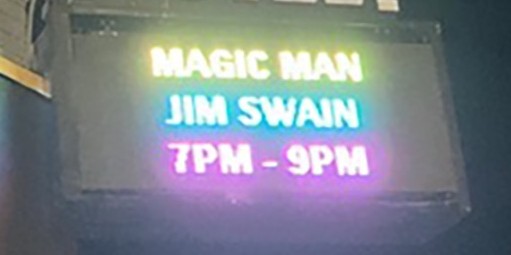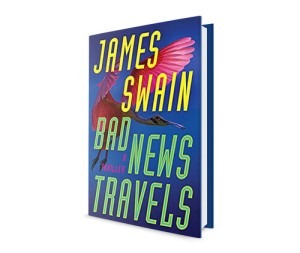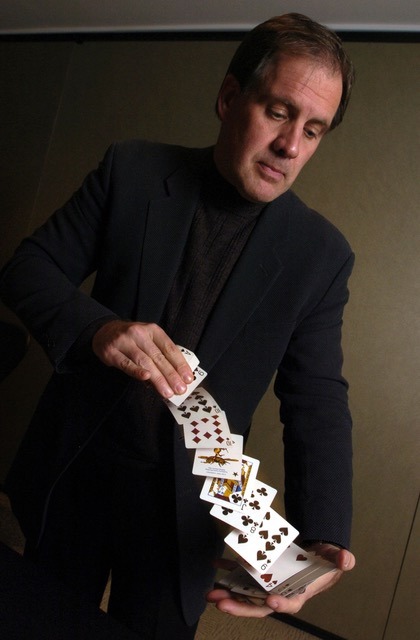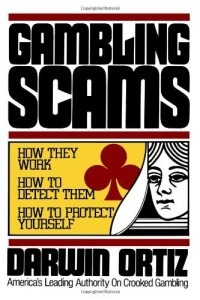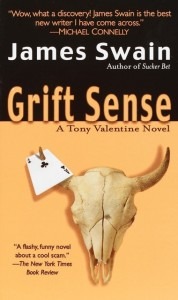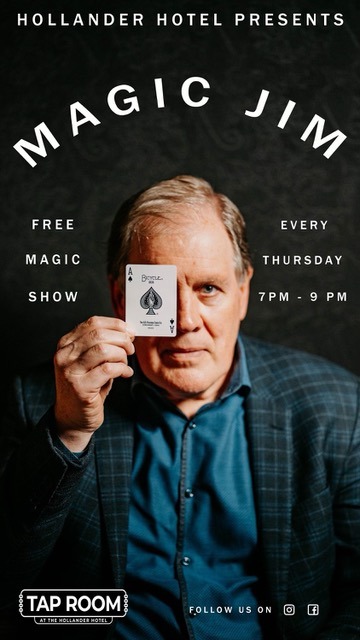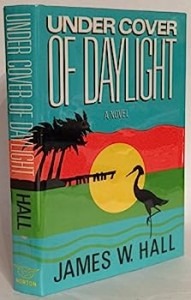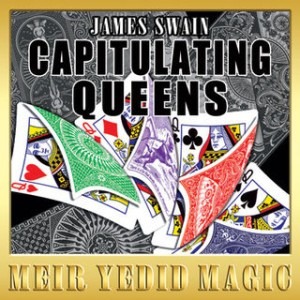Recently I took a yoga class at The Studio@620, an art space on First Avenue South in my hometown of St. Petersburg. As my fellow yogis and I spread our mats out on the concrete floor a few feet away from each other in front of our Ashtanga yoga instructor, Annica Keeler, I found myself staring (and smiling) at the nude backsides of three young women strolling toward a building that looked like a space ship that just landed. The stark naked women were in a photograph displayed on the wall, part of an exhibit called Instant Nostalgia featuring photographs by Michigan photograph Harvey Drouillard. Drouillard took the scene at the old St. Petersburg inverted pyramid pier in 2014, just before the building was torn down,
Douillard has made a career of posing nude figures at iconic spots in American cities. He calls his art "Guerrilla Nudes in public." As the description of the Studio's exhibit put it, "His black-and-white-photographs are intended to make people smile."
The photograph was the perfect complement to my yoga session. After all, as the Buddhist monk Thich Nhat Hanh once said, “Smiling is a kind of mouth yoga.”
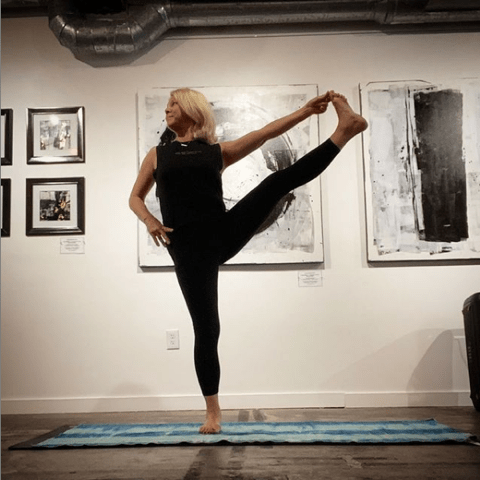 Yoga instructor at The Studio@620, Annica Keeler
Yoga instructor at The Studio@620, Annica Keeler
Annica Keeler, a certified Ashtanga yoga teacher, began our class by telling us that our yoga routine was going to tap into the energy of the half Moon. That was the phase of the Moon that was rising that evening in the night sky. “We’re going to open up our hips today. It’s always good to work the hips because we sit so much these days. We sit in the car, we sit at the computer, we sit, we sit, we sit,” she began as I glanced at Drouillard’s amusing photograph behind her. “Yes, very hip.”
I wasn’t sure if she was referring to our upcoming asana poses or Drouillard’s smile-inducing artwork on the wall. Maybe both.
Here in St. Petersburg yoga and art are a popular mix. In addition to The Studio@620, three other art spaces juxtapose the ancient art of physical postures (asanas) and breathing techniques (pranayama) with amazing visual artwork: The Woodson African American Museum, the Museum of Fine Arts and The Dalí Museum.
All four venues give participants the opportunity to pay tribute to both the Sun and to the art that is housed on their walls. The yoga sessions at The Studio, which are offered every second Monday of the month at 6:30, have an added bonus: not only is the artwork is right in the room where you are practicing your Sun Salutations and your Downward Facing Dog, but since the exhibits are constantly changing there, chances are as you twist and turn on your mat, you will be surrounded by entirely new art each time.
But is yoga itself an art form? I posed this question to our instructor just before our class. Actually what I asked Annica Keeler was -- "Skulle de säga att yoga är en konstform?" She was born in Sweden and since I'm trying to learn the language of my maternal grandparents, I asked her if I could try to conduct my interview with her in Swedish.
Keeler came to live in the U.S. more than 27 years ago. She first worked in the tourist industry. Now her day job is Development and Community Relations Director for the Tampa Bay Times where she directs that newspaper's fundraising efforts. She has worked for the paper for 18 years in various capacities, from marketing and community relations to administrative support for the CEO of the Times Publishing Co. She has been married for 26 years and has two adult kids, a world traveler and an aspiring baseball player.
Below is my interview with Annica Keeler, edited for clarity. I’ve included both my original exchange in Swedish and an English translation. Here are three things I learned from that interview and my yoga workout with this dynamic woman:
- I need to learn more Swedish.
- I need to do yoga more than once a month.
- Yoga may or may not be an art form, but doing yoga surrounded by art definitely is a unique artful experience that I will gladly sign up for again.
 Yoga at The Studio@620
Yoga at The Studio@620
MARGO HAMMOND: Do you consider yourself an artist? A yoga artist?
...Ar du en konstnär? En yogakonstnär?
ANNICA KEELER: No, no, I really don’t. Some people might see it is art, but for me yoga is more of a philosophy. A lifestyle.
....Nej, nej, det gör jag inte. Kanske andra kan säga det. Konstform? Men nej, för mig är yoga inte en konstform. Det är en filosofi. En livsstil.
MH: What are the health benefits of yoga?
...Vilka är hälsofördelarna med yoga?
AK: Yoga has many benefits. We become more flexible, of course. But more importantly, it’s an inside job. It can help to slow down your nervous system, which leads to a row of other health benefits. We learn to breathe better and deeper, leading to more oxygen intake. These things can help lowering the blood pressure and the risk of heart problem. It also helps us sleep better. These are just a few examples.
...Yoga har jättemånga. Som att man kan bli mer flexibel, förstås. Det hälper på insidan. Det lugnar vårt nervsystem, vilket i sin tur hjälper alla andra organ. Andningen gör att du lär dig ta in mer syre och när organen får mer syre så blir de friskare. Att andas rätt kan hjälpa oss att sänka blodtrycket vilket leder till allt från lägre risk för hjärtproblem till bättre sömn.
MH: Health for the body, but also mental health?
...Hälsa för kroppen, men också mental hälsa?
AK: Absolutely. Yoga not only has physical benefits but mental benefits as well. You practice patience, you become calmer – so when facing obstacles, you are in a better position to handle them. This is, in part, the philosophy of yoga. You learn to breathe with intention, and to be in the present moment. And when you are in the here and now, you don’t let the past or the present direct your mood. So, in a stressful moment when you might go into “fight or flight,” the parasympathetic nervous system keeps you in the safe “rest and digest” mode. And that feels mentally great. You usually feel happier when you can process your trauma on the yoga mat.
....Absolut. Yoga är inte bara för det fysiska utan även för den mentala hälsan. Ja, ja, man lär sig. Man lär sig tålamod, man blir lugnare, man lär sig hantera svåra saker bättre— detta är filosofin av yoga. Man lär sig att andas med avsikt (medvetet), och att vara här och nu. Och när man är närvarande, låter man inte det förflutna eller framtiden, ändra ens humör. Så i en stressful situation när man kanske går in i “fight or flight”, kan det parasympatiska nervsystemet hålla dig i det ”säkra viloläget”. Att inte vara rädd helt enkelt. Och det käns mentalt jättebra. Man blir oftast gladare när man kan bearbeta trauman på yogamattan.
MH: When did you begin to do yoga?
...När började du yoga?
AK: 1995
MH: Why did you start to do yoga?
...Varför började du yoga?
AK: Well, that’s a funny story. I had met my husband Jay (who I didn’t know would be my husband) so I stayed in Miami Beach and got a job at a gym. Madonna exercised there and I was the biggest Madonna fan in the world. So one day when Madonna was running on a treadmill, I got up and stood next to her and talked to her. She said she had started doing Ashtanga yoga. I wanted to be like her, so I took an Ashtanga class. My first introduction was to sit crosslegged for 45 min. It was awful! But I continued and got hooked.
...Det är rolig historia. Jag träffade Jay, som nu är min man, på en resa till Miami Beach, och blev kvar. Jag fick jobb på ett gym som Madonna gick på, och då var jag var världens största Madonna fan. Så en dag så när Madonna var där så sprang hon på en treadmill, jag gick upp och ställde mig jämte och pratade. Då sa hon att hon hade börjat yoga med Ashtanga yoga.Jag ville vara som henne och testade Ashtanga yoga. Min första klass satt vi i 45 minuter med benen i kors utan att röra oss. Det var det värsta jag varit med om i hela mitt liv. Men jag fortsatte och på den vägen är det.
MH: When did you start the first yoga class here at Studio@620?
...När var den första yogaklassen här på Studio@620?
AK: In 2017. I had finished my Ashtanga yoga teacher training and practiced with a large group of friends. Once a week we did yoga at someone’s house or out in a park, to get my practice in. When I graduated, I had nowhere to do yoga, so I just asked The Studio@620 if they wanted to offer yoga on their program. Of course, here the answer is always yes.
...In 2017. Jag hade avslutat min yoga lärarutbildning i Ashtanga. Jag hade en stor grupp människor som jag tränade med hela tiden. En gång i veckan yogade vi hemma hos någon eller ute i en park, så jag fick träna. När jag tog studenten hade jag ingenstans att yoga, så jag frågade Studio620 om de ville erbjuda yoga. Naturligtvis, här är svaret alltid ja.
MH: Is yoga popular in Sweden?
...Är Yoga populärt i Sverige?
AK: Very popular. I think it’s popular all over the world.
...Jättepopulärt. Jag tror det är populärt över hela världen, egentligen jättepopulärt.
MH: How often do you recommend that people do yoga? Should we do yoga more than once a month?
........Hur ofta rekommenderar du att folk gör yoga? Ska vi göra yoga mer än en gång i månaden?
AK: If you want to reap the mental and physical benefits of yoga, I suggest three days a week (at least). Less than that might be like starting over every time. Steady and constant practice will result in overall health and a sense of well-being. But it’s still good if you do it twice a week. It’s always good.
........Om man vill få de mentala och physiska fördelarna med yoga så föreslår jag minst tre dagar i veckan. Annars kan det kännas som om man börjar om var gång. Stadig och konstant praktik resulterar i bättre hälsa och en känsla av välbeffinande. Men det är ju ändå bra om man gör det två gånger i veckan. Det är alltid bra.
MH: Do you do yoga every day?
...Du gör yoga varje dag?
AK: Every day (almost). I practice for my well-being. I suffer from RA and yoga helps to keep me mobile and pain free. Of course, I have poses I don’t love, like backbends. Those are hard for me, so I might not do much of them.
.......Varje dag (nästan). Jag måste praktisera var dag för mitt välmående. Jag har reumatism och yogan hjälper väldigt mycket. Så klart tycker jag inte om alla övningar, har till exempel svårt med bakböjningar och gör de inte konstant.
MH: Is it harder to do yoga as we age?
...Är det svårare att yoga när vi blir äldre?
AK: Yes and no. The style becomes different. My yoga has completely changed. Ten years ago I was always upside down. I loved to push myself into pretzel moves. I loved taking my body to the edge, putting a foot behind the head. But now with the rheumatoid arthritis I can’t do that. Getting older also comes with less mobility and more stiffness. There are those who are full-time yoga teachers who just do yoga all the time and of course they keep up. But it also depends on how your bones age. We all age differently. For me the biggest change has been mental. I don’t have that ego drive anymore. I don’t feel the need to be upside down or to do pretzel moves. I look more inside and how I feel. Does this feel good? No? Then you shouldn’t do it
....Ja och nej. Stilen blir annorlunda. Min yoga har ändrat sig helt. För tio år sedan så var jag jämt upp och ner. Jag gjorde alltid galna poser och älskade det. Jag älskade ta kroppen dit — lägga i foten bakom nacken och allt sånt. Men nu har jag ju ledgångsreumatism så sånt gör jag inte längre. Med åldern blir vi också stelare. Det finns de som har jobbat som yogalärare i många år och tränar var dag, de kan kanske hälla sig smidigare än människor som inte spenderar timmar dagligen på mattan. Men det beror också på hur ditt skelett åldras. Alla åldras olika. Men för mig är det också den mentala ändringen. Jag har inte det ego drivet längre, att man måste stå på händer, att man måste göra de coolaste poserna. Man går mer inåt och känner in i kroppen. Känns det här bra? Nej? Då ska du inte göra det.
MH: Is your class good for all ages?
...Är din klass bra för alla?
AK: Yes, it’s good for everyone. When I teach a class with people who have practiced yoga for a long time, then I think differently. Then it might be more advanced. At my classes here at The Studio I do a little of both, easy and hard – because I know that every month there will be people attending, who are new to yoga.
..........Ja, det är bra för alla. När jag kör en klass med folk som har gjort yoga länge, då tänker jag annorlunda. Då blir det mer poweryoga och mer ashtanga mer avancerad. På mina klasser här på studion gör jag lite av båda — lätt och svårt — för jag vet att varje månad kommer nya människor som aldrig gjort yoga.
MH: How many people come to the class?
...Hur många kommer till din klass?
AK: Today when it’s pouring we might only have five. I don’t know. We’ve had had up to 44. Before Covid we had a steady group of 25–30.
....Idag när det spöregnar kanske vi bara har fem. Jag vet inte. Vi har haft upp till 44. Innan Covid hade vi en stadig grupp på 25 – 30.
MH: Is yoga more popular with women?
...Är yoga mer populärt bland kvinnor?
AK: No not really. My classes often have more boys than girls so you never know who’s going to come. I think yoga is popular with everyone out there.
...Nej, egentligen inte. Mina klasser har ofta mer killar än tjejer så man vet aldrig vem som kommer. Men jag tror yoga är populärt för alla därute.
PLEASE NOTE:
A version of this article was published on September 5 at Arts Coast Magazine, the online journal of Creative Pinellas: https://creativepinellas.org/magazine/visual-art-and-yoga-a-potent-mix/ Those who follow this blog and live in the Tampa Bay Area will find specific information on how to join the yoga sessions mentioned above in that longer version of this article.
Yoga is offered in the Dalí Museum’s Raymond James Auditorium overlooking the Avant-Garden – or outside in the Garden – every third Sunday of the month from 9-10 am

